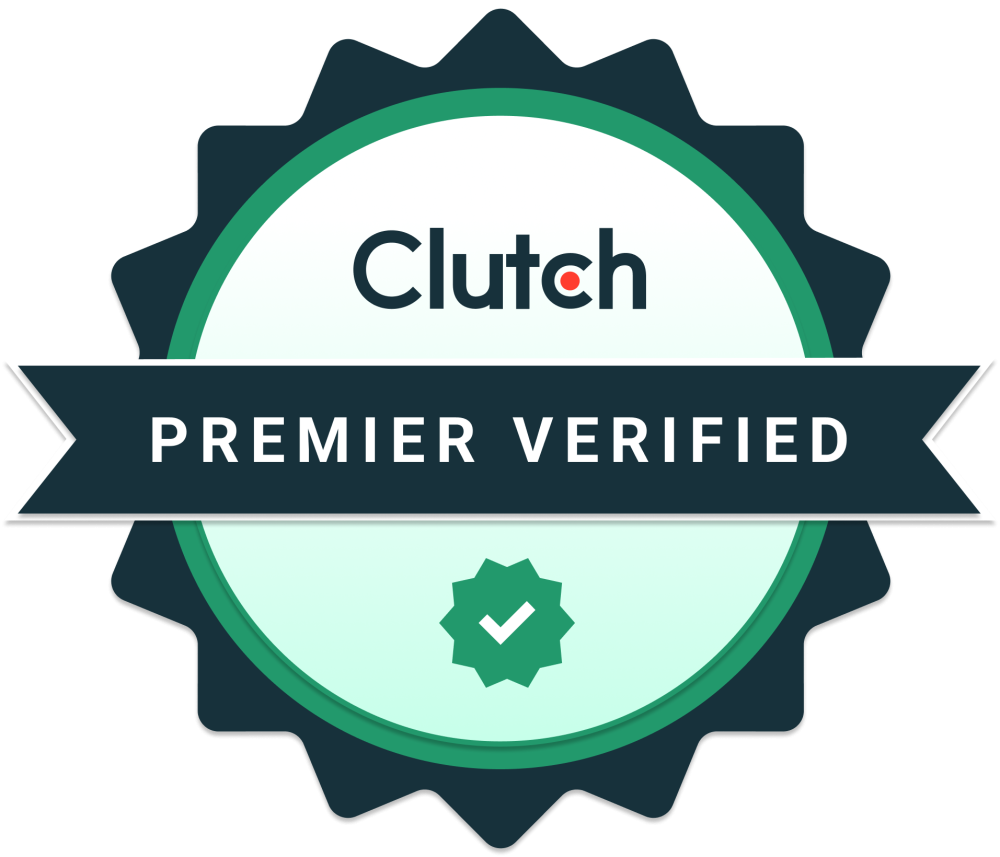The Software Dilemma: Build It or Buy It, Part II: Advantages & Disadvantages of Both
In our last blog we covered the basic differences between buying pre-built software and purchasing custom-built software. This week we are going to take a closer look at the factors involved in this decision.
In our last blog we covered the basic differences between buying pre-built software and purchasing custom-built software. This week we are going to take a closer look at the factors involved in this decision.
Consider All Costs of Both Options
Buying pre-built software will likely be less expensive up-front; however, custom software could end up being more economical over time. When considering pre-built software, it's important to also account for the cumulative costs of licensing, subscription renewals, and potential feature add-ons that may be required as your business grows. Custom software, while having a higher initial investment, can be designed to scale without incremental fees and provides the advantage of paying only for the features you need.
For both options, look at the costs of maintenance and support. Pre-built software typically comes with maintenance packages and support contracts that can be purchased for an additional fee. Custom software will also likely incur maintenance and support costs, whether it is maintained by your in-house team or your chosen software developer team. Additionally, consider the potential need for upgrades and the associated costs with both options. Pre-built software vendors may or may not charge for major updates; custom software might or might not include ongoing improvements as part of the original development agreement. The additional fees for both options can add up over time; make sure you are aware of what these fees are and what is included in them.
For either option, you may need to factor in the costs of training your staff to use and/or update and maintain the software. Pre-built software vendors sometimes offer training sessions at an additional cost. Custom software developers can tailor training specifically to your system, which might be more efficient and cost-effective. It’s also worth considering the potential productivity loss during the training period, as employees get accustomed to the new system.
Deployment Time: Weigh Your Options Carefully
Pre-built software can often be deployed more rapidly, allowing you to start using the software almost immediately. This quick deployment can be advantageous if you have an urgent need for a solution. Custom software solutions will take longer to develop and deploy because they are tailored specifically to your unique requirements. The development process involves gathering requirements, designing, coding, testing, and iterating based on feedback, which can be time-consuming.
A rushed deployment might meet immediate needs but could lead to compromises in functionality or integration down the line. Consider the potential time savings in the long run with a custom solution that might better streamline operations and improve efficiency. While the initial development phase is longer, a custom-built solution designed to fit your processes can reduce time spent on workarounds or adjusting your operations to fit the software. This can lead to increased productivity and fewer disruptions over time.
Implementation & Integration: Can Be Simple or Complex
Consider the level of complexity involved and the resources required for implementation of your software. Pre-built software may offer quicker deployment, but the configuration process can vary in complexity depending on the software and your existing infrastructure. Custom software typically involves a more extensive planning and development phase, requiring close collaboration between your team and the developers to ensure the solution meets your specific needs. While this process takes longer, it allows for a tailored approach to fit seamlessly with your operations.
If purchasing software off the shelf, you will need to assess the software's compatibility with your current systems and processes. Availability of APIs and ease of data exchange with other software are crucial for smooth integration. Ensure the software can operate seamlessly within your existing tech stack. You may need to invest time and resources into testing and troubleshooting to achieve optimal integration.
If you are building your own software, compatibility will be built in for seamless integration. Custom-built software allows you to design and develop interfaces and data exchange mechanisms that are specifically aligned with your existing systems. This approach minimizes the risk of incompatibility issues and ensures a more cohesive operational environment. Additionally, custom software can be more easily updated and modified to integrate with future technologies and systems.
Level of Customization & Flexibility: It’s Your Choice!
Determine the level of customization necessary to fulfill your specific business needs. Pre-built software may allow for certain configurable features and typically offers limited customization options. Building your own software, on the other hand, offers unlimited flexibility and provides control over all software features and functionality.
With custom software, you have the ability to design and implement features that cater precisely to your workflow, ensuring that the software meets your exact specifications and is easy to use. This level of control allows you to adapt the software to changing business needs and industry standards over time, providing a future-proof solution that can evolve with your organization. Custom software can also incorporate branding and design elements that reflect your company's identity, providing a cohesive and professional look and feel. This personalized touch can enhance your brand image and strengthen user engagement.
With either option, your organization has an opportunity to change its practices along with its software. New and improved software workflows usually mean fewer manual tasks and a chance to address waste and inefficiency. However, with a custom software approach, this effect is amplified by the ability to more closely match your software’s capabilities and your ideal business practices.
Scalability: Consider Current and Future Needs
Software scalability ensures that your software can adapt to future technological changes and evolving business needs, as well as be tailorable for current fluctuations in the use of your software. Some pre-built software options offer scalability through tiered plans or modular add-ons, which can be useful for gradual growth. However, it’s crucial to thoroughly understand the scalability limits of these options and whether they align with your long-term goals.
Custom-built software is inherently designed to be adaptable for future changes and can be tailored to allow for as much scalability as needed. This flexibility can support the limitless growth of your business, ensuring that the software evolves with your needs without requiring a complete overhaul. Additionally, custom software can be designed to integrate seamlessly with new technologies and systems as they emerge, providing a robust foundation for sustainable growth.
Don’t Forget Maintenance
Consider the ongoing maintenance requirements for both pre-built and custom-built software. Both options will require regular maintenance to ensure optimal performance, security, and functionality. The choice of who performs this maintenance is up to you and should be carefully considered.
For pre-built solutions, your choices for maintenance support will generally be between your in-house staff and the software vendor. It is crucial to understand what type of maintenance is included in your software purchase. Many software vendors offer maintenance packages that cover updates, bug fixes, and support, but these services often come with additional costs. Ensure you are aware of these costs and what they cover. It's also important to evaluate the responsiveness and quality of the vendor’s support services to avoid potential downtime and disruptions.
Custom-built applications offer flexibility in how maintenance is handled. Your in-house staff may be capable of providing maintenance, especially if they were involved in the development process and are familiar with the software's architecture. Alternatively, you may choose to have your software developer continue to upgrade and maintain your software. This will likely be an added cost, although can be beneficial as the developer has an in-depth understanding of the software and can efficiently implement updates and enhancements.
Custom software maintenance allows for more tailored support options. You can establish a maintenance plan that aligns with your specific needs and schedules, ensuring that updates and improvements are implemented seamlessly without affecting your operations.
How Competitive Do You Want To Be?
Understanding how your software may or may not give you a competitive edge is crucial. The right software solution can significantly impact your ability to stand out in the marketplace. When considering whether to buy pre-built software or build a custom solution, evaluate how each option aligns with your business strategies and competitive positioning.
Pre-built software can offer industry-standard features that allow you to keep up with competitors. However, these features are often generic and available to any business that purchases the same software. While this can be beneficial for achieving baseline functionality quickly, it might not provide the unique capabilities needed to truly differentiate your business. The lack of customization in pre-built software may limit your ability to implement innovative processes or offer unique services.
Custom-built software can be tailored to meet the specific needs of your business and your customers. This level of customization allows you to incorporate unique features and functionalities that are not available in off-the-shelf solutions. By developing software that addresses your distinct business challenges and opportunities, you can create a competitive advantage that sets you apart from other players in your industry.
Assess Your Unique Security Needs
It is crucial to assess and manage potential risks associated with your software to safeguard your clients and your business. Ensuring that your software meets security standards, complies with industry regulations, and protects your clients’ sensitive data is a top priority.
When considering off-the-shelf software, evaluate whether it fulfills your specific security requirements. Many pre-built software solutions come with standard security features that address common business needs. However, these features might not be sufficient for all industries or unique business models. For businesses with higher security demands, such as those handling sensitive customer information or operating in heavily regulated industries, additional security measures may be necessary.
Custom-built software allows you to implement robust security protocols tailored to your specific needs. This can include advanced encryption, multi-factor authentication, and other specialized security features designed to protect against threats specific to your business environment. Custom solutions can be developed to comply with the latest industry regulations, such as GDPR, HIPAA, or PCI-DSS, ensuring that your software remains compliant and reduces the risk of legal issues.
In addition to initial security features, ongoing security management is essential. Both pre-built and custom software will require regular updates and maintenance to address emerging threats and vulnerabilities. For pre-built solutions, this may involve relying on the software vendor for timely updates and patches. It is important to understand the vendor’s security practices and how quickly they respond to new security challenges.
Ownership: How Much Is Enough?
With custom-built software, you typically have full ownership. This means you have complete control over the software’s source code, allowing you to modify and extend it as your business needs evolve. Full ownership provides you with the flexibility to customize the software to meet specific requirements, integrate it seamlessly with other systems, and implement new features as needed. Additionally, you have the freedom to choose how the software is maintained and updated, whether by your in-house team or an external developer. Full ownership also means you retain all intellectual property rights, which can be a significant asset for your business.
Pre-built software often involves licensing agreements with certain usage restrictions. When you purchase or subscribe to off-the-shelf software, you are typically buying a license to use the software under specific terms and conditions set by the vendor. These licensing agreements can include limitations on the number of users, the duration of use, and the ability to modify or redistribute the software. While this can be a more cost-effective option initially, it may limit your ability to adapt the software to your changing business needs. Additionally, you are dependent on the vendor for updates, maintenance, and support, which can impact your operational flexibility.
Considering all these factors can help you determine your exact software needs and get you closer to making the decision on whether to build or buy your next software. In our next blog we will look at specific steps you can take to help you make your final decision!
Phone: (503) 468-4880
Email: connect@buildableworks.com
What can we help you with?
Talk with an expert at Buildable about your project.
This site is protected by reCAPTCHA. Google Privacy Policy and Terms of Service apply.
Copyright © 2025 Buildable.
All Rights Reserved
Privacy Policy | Terms of Service
Let's build what's next. Together.




